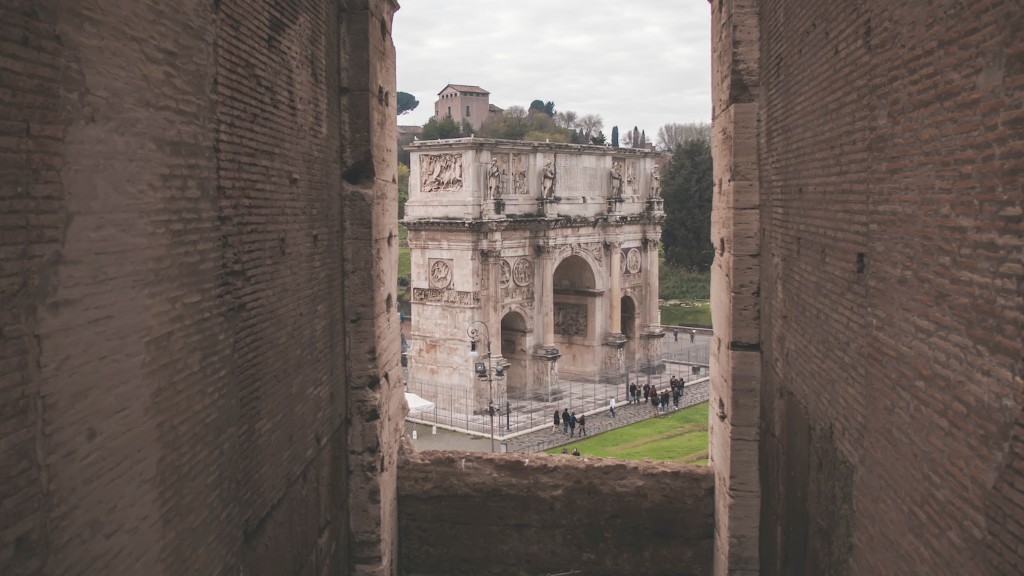Food offering in Ancient Rome was abundant and varied – from everyday staples like barley, grapes, olives and garlic, to gourmet meals like boar stew and mullet fish served in silver serving dishes. Food in Ancient Rome was a complicated matter and although there were many more options than in the preceding Iron Age, it was still a far cry from the variety of foods available in the modern day.
In Ancient Rome, people of the lower classes were primarily vegetarian and their diet was based on grains, legumes and horticultural items. Basic staples included beans, lentils, chickpeas, wheat, rye and barley. Flat-shaped cakes made of cereals were also popular and were seasoned with herbs and spices. Vegetables such as lettuce, cabbage, celery, onions and garlic were usually cooked to make them easier to digest, and eaten with sauces and/or oils.
Nuts, dates and honey constituted an important part of the Roman diet, especially among the upper classes. They were consumed on their own, in desserts and as a sweetener in dishes. Olives – either fresh or preserved –, assorted cheese and dried and salted fish were also in common use. Milk and eggs were, however, a rarity, usually reserved to very limited circles.
Meat was an important part of the riches’ diet, particularly pork, wild boar and lamb, which were often supplemented with fowl, hare and game. Exotic animals such as pheasants, flamingo and lion meat were also consumed. Fish was also a favorite and was enjoyed both in salted and fresh forms. Salted fish was especially popular and was often imported from North Africa.
A major aspect of Ancient Roman cuisine was its elaborate presentation. The material wealth of the upper classes allowed for elaborate dishes, served on costly ceramics, silver or glassware and garnished with vegetables and flowers. In addition, meals were often accompanied by a large array of condiments such as honey, anchovies sauce, mustards, sauces and pickles to add flavor and color.
Etiquette
Etiquette was of great importance in Ancient Rome and set clear rules for meals. Dining at banquets usually meant reclining on a couch with several guests, each around a “mensa”. Banquets were often dishes of opulence and the wealthier citizens would have saltcellars of silver, golden vessels and rare spices. Cereals and other foodstuffs were often stored in amphoras, cylindrical shaped vessels made of clay.
The wealthiest Romans were known to enjoy aperitivs such as cereal-based gruel and wine with honey, as well as honey cakes as a side dish. And it wasn’t unusual to see guests wearing a small scythe at the table, to cut their meat with. The poor, on the other hand, often ate together in common refectories, using only oil and garlic before their meal. The most affluent families would have no more than twelve people at the table, and it was also common to have slaves to serve their masters.
Celebrations & seasonings
The Romans loved celebrating, mainly through lavish banquets. Several Roman emperors would host an immense number of guests in wealthy banquet halls, where eating a proper meal was almost a science: gourmet dishes accompanied by exquisite wines and liquors, alongside fruits and nuts of several varieties. Wine was naturally considered an essential part of the banquet.
Depending on the occasion, festivities might feature famous dancers, acrobats and other entertainment, while guests would sit and recline around the table. Offerings and tributes from conquered provinces were often served during these events and the wealthier members of the nobility would often use the opportunity to show off their wealth.
Several spices and condiments were also used in Ancient Roman cooking. Spices such as pepper, cinnamon, and saffron were not native to Rome and had to be imported from Syria, India and Egypt. Mustard, however, was widely used and widely cultivated in the local gardens. Herbs like thyme, oregano, and mint were also very popular and used for seasoning. On the other hand, hot pepper, garlic and onion were a common daily seasoning.
Trade
The Roman Empire enabled access to new spices, herbs, fruits and vegetables, and many were adopted into the existing culinary culture. Rome traded with the North African province of Cyrenaica and its shipyards, Phoenician and Greek traders, and they often exchanged goods, such as spices and wine form the East, and grain and olives from the parts of the Mediterranean.
Of course, not everything was imported; in fact, items such as wheat and olive oil made up the base of the Roman diet, with grains and olives being the main source of carbohydrates. The Romans also had a penchant for using products from the sea, such as mussels, oysters, salted and cured fish in their dishes.
Regional cuisines were widely available and widely varied. From the heavy, garlic –based Roman style of cooking to the fish-centric Greek style, the Romans successfully managed to combine regional influences with a bustling variety of fresh, imported foods. All these regional influences enabled the Roman chefs to create some of the most remarkable fare known in the ancient world.
Influences
The Roman cuisine was heavily influenced by Ancient Greece’s Mediterranean diet, which featured a variety of sauces, salads and small dishes. The Roman diet was also hugely intertwined with the ancient Roman religion, as food had to be blessed before it could be consumed. In addition, sacrifices were frequently carried out, with the flesh and blood of the animals being offered to the gods.
The influence of Ancient Rome lives in today’s Italian cuisine and other Mediterranean-style cooking. Cheese played an important role in Ancient Rome and is still eaten today with some of the most popular cheeses including feta, Gorgonzola and Parmigiano-Reggiano originating from Italy. Italy is also home to some of the world’s best olive oil. Spices such as pepper and cinnamon, which had to be imported from Syria, India and Egypt at the time, still form an important part of modern cooking and are a symbol of the grandeur of the Ancient Roman cuisine.
Consumption Patterns
Diet also varied depending on a person’s social class and their financial status. The upper classes were known to enjoy sumptuous dishes incorporating expensive spices, while the lower classes were more likely to eat vegetarian meals, including those made with legumes, grains and vegetables. Bread was the main food for lower-class Roman citizens and was taken with every meal, while wine and olive oil were used to last longer between meals.
The Romans also favored a strong cup of coffee, as coffee beans were imported from North Africa.However, coffee was mainly a breakfast drink and only the wealthy could afford it. Alcohol other than wine was also available and served in taverns, although it was mainly popular among the lower classes. One of the most popular alcoholic drinks of the time was a sweet, lightly alcoholic drink made of wine, honey, and spices.
Health Issues
In general, a significant portion of the Roman diet was made up of what is now known as ‘empty calories’, such as bread, grains and plenty of olives and olive oil. Even though the Romans did not suffer from widespread malnutrition, they had to put up with other health issues due to their food choices.
Gluten, which is found in modern bread and pasta, was present in Ancient Rome due to the widespread cultivation of wheat.However, for many Romans, gluten was hard to digest and often caused digestive issues. It could also be argued that due to unhealthy diets, Ancient Romans had higher levels of cholesterol and triglycerides than people of the same age today. Also, food borne illnesses were quite common due to poor food safety standards, and Roman citizens had to regularly treat themselves with natural remedies such as herbal teas, honey and wine.
Dietary Fixatives
Pursuit of more exotic ingredients such as exotic spices and exotic fruits also sparked innovation. Romans were well acquainted with the process of salting meats as a dietary fixative and aromatic herbs and spices were also used to give food special flavors. Different types of vinegar were also used, such as grape and wine vinegars, to pickle and add flavor to dishes.
Meat was often preserved in honey and different types of sauces were used to make it tastier. Raisins, sugar and honey were also used to sweeten dishes and to coat fruit as a sign of luxury and sophistication. Finally, anchovy and fish sauces made dishes more palatable, as well as adding saltiness to the food.
Overview
In conclusion, Ancient Romans had a varied diet that was based on staples such as grains, legumes, vegetables, fruits and nuts, as well as more exotic ingredients such as exotic spices and exotic fruits. Meat was an important part of the





